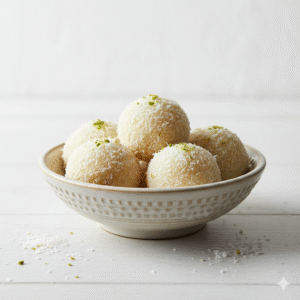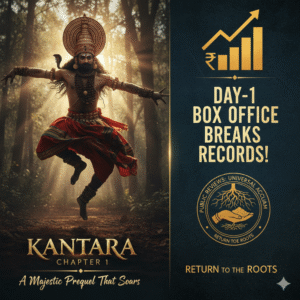10 Best Navratri Fasting Recipes and Their Health Benefits | Navratri fasting Food Guide
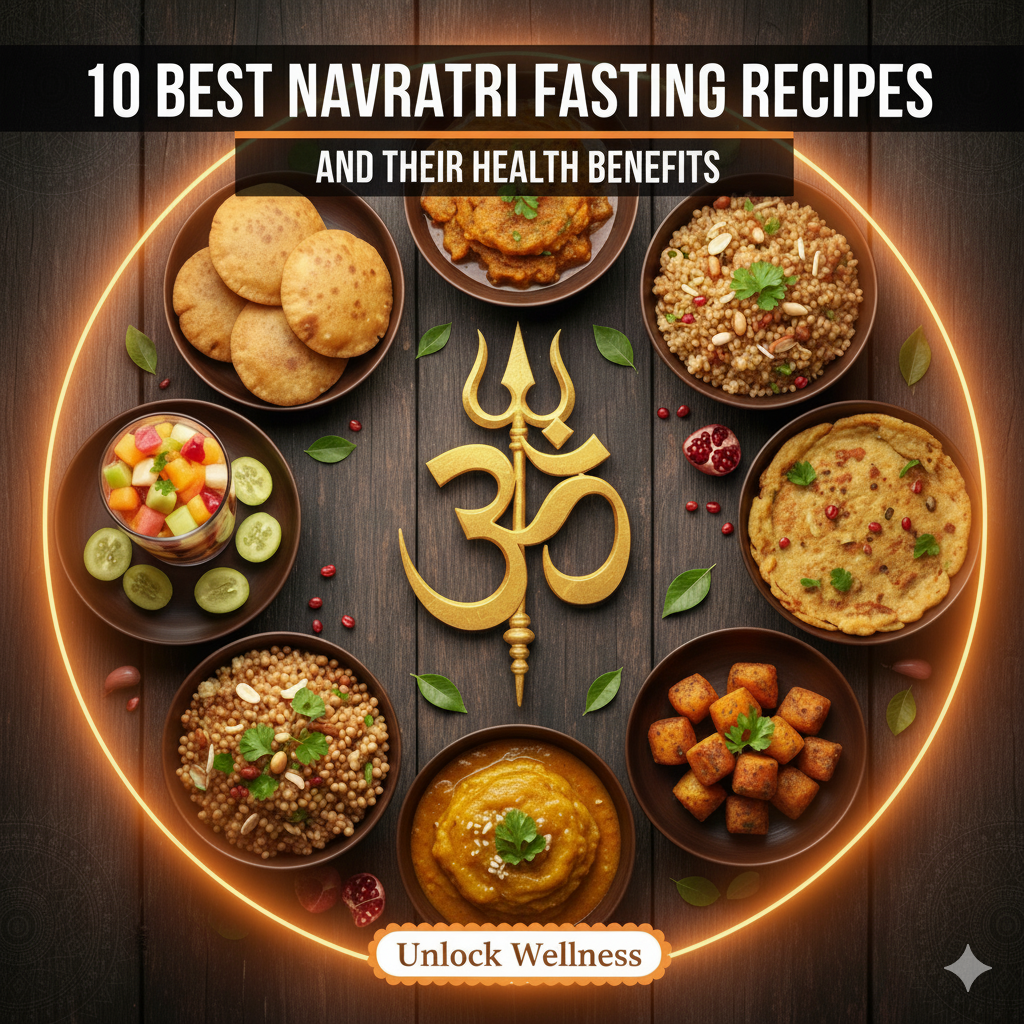
Navratri 2025 is here, and with it comes nine days of devotion, prayers, and fasting. During this sacred festival, devotees avoid grains, onion, garlic, and processed food while preparing special Navratri Fasting recipes that are sattvic (pure), light, and full of nutrition.
If you are searching for healthy and tasty Navratri fasting recipes along with their benefits, this complete guide will help you choose the best vrat-friendly dishes.
Why Do We Eat Special Food During Navratri?
Navratri fasting is more than just avoiding food — it’s about detoxing the body, calming the mind, and boosting spiritual energy. The recipes prepared during these nine days use ingredients like sabudana, kuttu atta, singhara atta, samak rice, makhana, and potatoes, which are easy to digest and provide instant energy.
Health Benefits of Navratri Fasting
Before diving into the recipes, let’s look at the benefits of fasting during Navratri:
Detoxifies the body – Light sattvic meals help cleanse the digestive system.
Boosts energy – Foods like sabudana, potatoes, and millets provide long-lasting energy.
Supports weight management – Eating lighter meals prevents overeating and aids metabolism.
Improves digestion – Gluten-free and easy-to-digest flours reduce bloating.
Enhances mental clarity – A sattvic diet helps in meditation and spiritual focus.
Strengthens immunity – Nuts, fruits, and millets are rich in vitamins and antioxidants.
Top Navratri Fasting Recipes with Benefits
Here are the 10 most popular vrat recipes you can prepare during Navratri, along with their health benefits:
1. Sabudana Khichdi
Ingredients: Soaked sabudana, potatoes, roasted peanuts, ghee, and sendha namak.
Benefits:
Rich in carbs, keeps you energetic all day.
Peanuts add protein and healthy fats.
- Light and easy to digest.
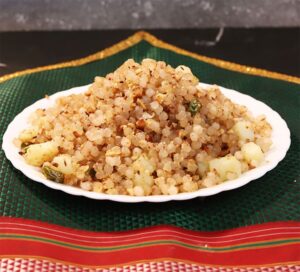
2. Kuttu Ke Cheela (Buckwheat Pancakes)
Ingredients: Kuttu atta, grated potatoes, green chilies, and coriander.
Benefits:
High in protein and fiber.
Gluten-free alternative to wheat.
Keeps hunger away for long hours.

3. Singhare Ke Atte Ki Poori
Ingredients: Singhara atta, boiled potatoes, and ghee for frying.
Benefits:
Good source of minerals and antioxidants.
Naturally gluten-free.
Perfect with aloo tamatar curry.
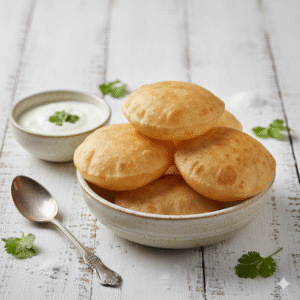
4. Aloo Tamatar Ki Sabzi
Ingredients: Boiled potatoes, tomato puree, cumin, and rock salt.
Benefits:
Provides instant energy.
Tomatoes add vitamin C and antioxidants.
Simple, comforting, and filling.
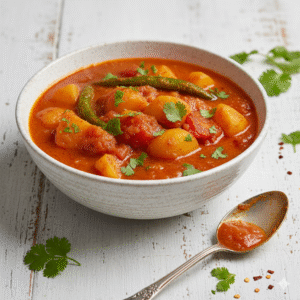
5. Samak Rice Pulao (Barnyard Millet)
Ingredients: Samak rice, potatoes, green chilies, and cumin.
Benefits:
Gluten-free millet packed with fiber.
Keeps blood sugar in control.
Light alternative to regular rice.
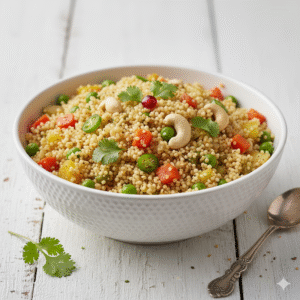
6. Makhana Kheer
Ingredients: Roasted makhana, milk, cardamom, sugar/jaggery, and nuts.
Benefits:
Low in fat and cholesterol.
Rich in calcium and antioxidants.
A perfect sattvic sweet dish.
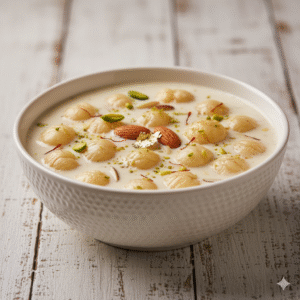
7. Roasted Makhana Snack
Ingredients: Makhana, ghee, and rock salt.
Benefits:
Crunchy, guilt-free snack.
Packed with protein and minerals.
Great for evening cravings.
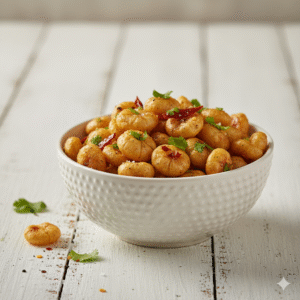
8. Sweet Potato Chaat
Ingredients: Boiled sweet potato, lemon juice, rock salt, and black pepper.
Benefits:
High in fiber and vitamin A.
Keeps you full for hours.
A healthy alternative to fried snacks.
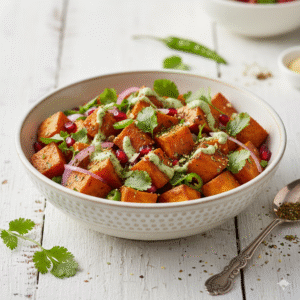
9. Fruit Salad with Yogurt
Ingredients: Fresh fruits, curd, honey, and dry fruits.
Benefits:
Provides natural sugar and hydration.
Boosts immunity and digestion.
Refreshing and cooling during fasting.
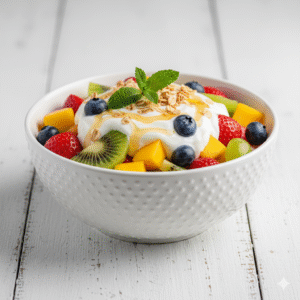
10. Coconut Ladoo
Ingredients: Grated coconut, condensed milk, and cardamom.
Benefits:
Natural sweet treat without processed sugar.
Provides healthy fats and energy.
Quick to prepare and delicious.
